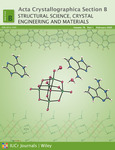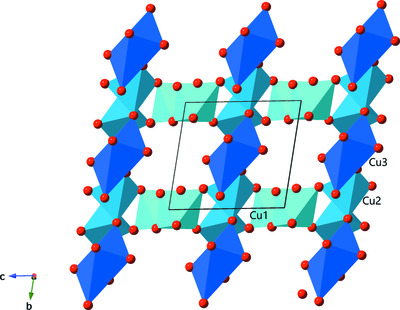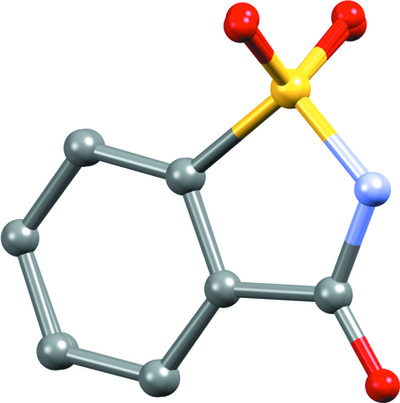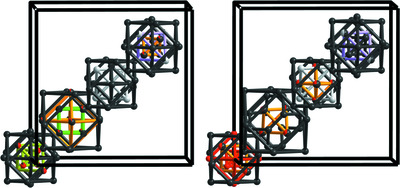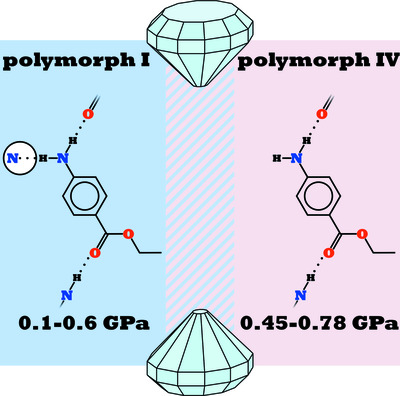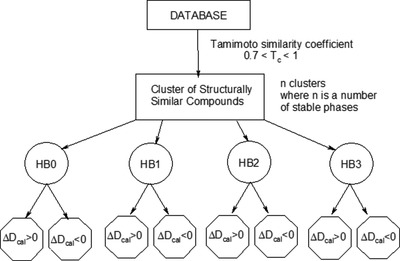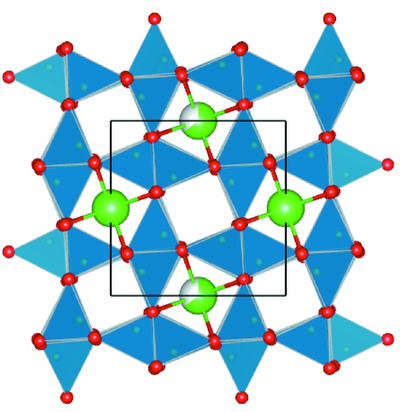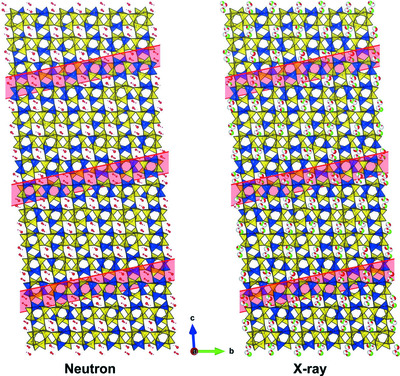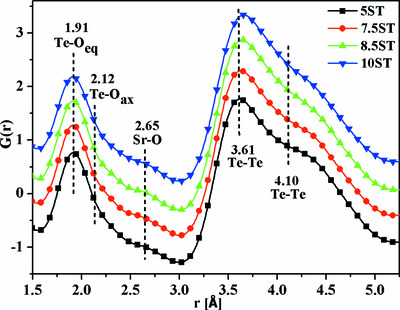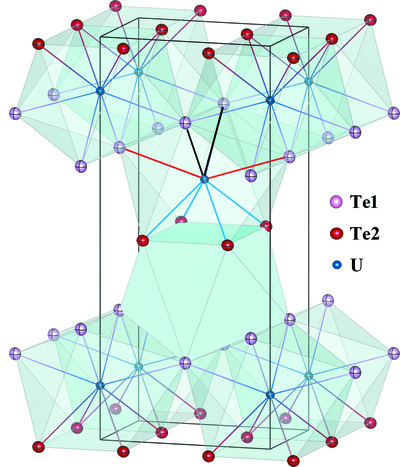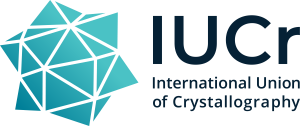Journal list menu
Export Citations
Download PDFs
research papers
The crystal structure of the first synthetic copper(II) tellurite arsenate, CuII5(TeIVO3)2(AsVO4)2
- Pages: 1-6
- First Published: 23 December 2019
Incommensurate crystal structure of PbHfO3
- Pages: 7-12
- First Published: 23 December 2019
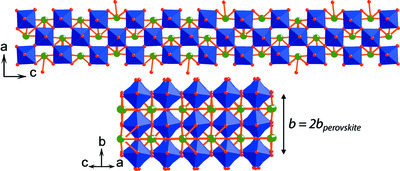
A detailed description is given of the PbHfO3 incommensurate structure solved from single-crystal X-ray diffraction data measured with synchrotron radiation at 443 K. The 1D modulation vector varies slightly and monotonically with temperature. The structure modulation is mainly associated with the displacement of Pb2+ ions accompanied by HfO6 octahedral tilts.
The solubility and stability of heterocyclic chalcones compared with trans-chalcone
- Pages: 13-17
- First Published: 23 December 2019
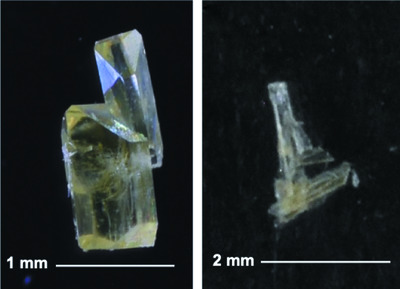
The thermal stability and solubility of chalcones increase with the number of heterocyclic rings which are present in the structure. (E)-1-(1H-Pyrrol-2-yl)-3-(thiophen-2-yl)prop-2-en-1-one and (E)-3-phenyl-1-(1H-pyrrol-2-yl)prop-2-en-1-one are compared with trans-chalcone, also known as (2E)-1,3-diphenylprop-2-en-1-one.
On the puzzling case of sodium saccharinate 1.875-hydrate: structure description in (3+1)-dimensional superspace
- Pages: 18-27
- First Published: 23 December 2019
Rb9–xAg3+xSc2(WO4)9: a new glaserite-related structure type, rubidium disorder, ionic conductivity
- Pages: 28-37
- First Published: 23 December 2019
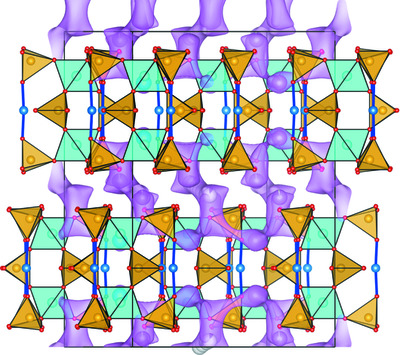
Rb9−xAg3+xSc2(WO4)9 (0 ≤ x ≤ 0.15 at 803 K) is a new structure type containing glaserite-like layers of {Ag3[Sc2(WO4)9]}9− groups separated by disordered Rb+ (Ag+) ions. The compound has a first-order superionic phase transition at 570 K with a sharp rise of electrical conductivity up to 1.8 × 10−3 S cm−1 at 690 K.
Revised radii of the univalent Cu, Ag, Au and Tl cations
- Pages: 38-40
- First Published: 23 December 2019
Rationalization of the crystal structure of eudidymite Na2Be2[Si[4]6O15]·H2O in light of the extended Zintl–Klemm concept
- Pages: 41-46
- First Published: 14 January 2020
![Rationalization of the crystal structure of eudidymite Na2Be2[Si[4]6O15]·H2O in light of the extended Zintl–Klemm concept](/cms/asset/760be7b8-4aff-4edc-a02d-d26d4a26b202/ayb2xk5060-fig-0001-m.jpg)
The structure of the mineral eudidymite (Na2Be2[Si[4]6O15]·H2O) is re-interpreted on the basis of the extended Zintl–Klemm concept. The donor atoms (Na, Be) convert the Si atoms into pseudo-P to form a three-connected Si-skeleton, characteristic of pentels (Group 15 elements), which are connected by fragments of the β-BeO structure.
Crystal structures of two very similar 2 × 2 × 2 superstructures of γ-brass-related phases in ternary Ir–Cd–Cu system
- Pages: 47-55
- First Published: 14 January 2020
A new high-pressure benzocaine polymorph — towards understanding the molecular aggregation in crystals of an important active pharmaceutical ingredient (API)
- Pages: 56-64
- First Published: 16 January 2020
Polymorphism of monotropic forms: relationships between thermochemical and structural characteristics
- Pages: 65-75
- First Published: 16 January 2020
Compositely modulated structures of phosphor materials SrxLi2+xAl2–xO4:Eu2+
- Pages: 76-84
- First Published: 06 February 2020
Crystal engineering of an adenine–decavanadate molecular device towards label-free chemical sensing and biological screening
- Pages: 85-92
- First Published: 06 February 2020
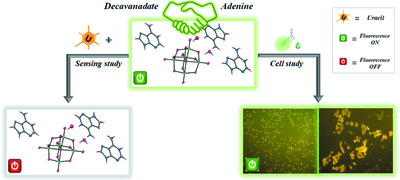
The compound [AdH]6[V10O28]·4(H2O) containing 1H,9H-adeninium (AdH)+ and decavanadate (V10O28)6− has been successfully designed, synthesized and characterized via a hydrothermal process at 110°C. The title compound not only affords a label-free biosensor enabling selective recognition of nucleic acids but also expands the family of hybrid materials in the biological application realm from a luminescent screening point of view.
The incommensurately modulated structures of low-temperature labradorite feldspars: a single-crystal X-ray and neutron diffraction study
- Pages: 93-107
- First Published: 06 February 2020
Structure of strontium tellurite glass, anti-glass and crystalline phases by high-energy X-ray diffraction, reverse Monte Carlo and Rietveld analysis
- Pages: 108-121
- First Published: 06 February 2020
Supramolecular insight into the substitution of sulfur by selenium, based on crystal structures, quantum-chemical calculations and biosystem recognition
- Pages: 122-136
- First Published: 06 February 2020
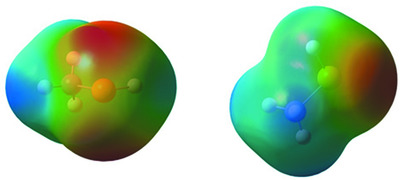
The concept of the present study includes an analysis of the interactions of S and Se from cysteine (Cys), methionine (Met) selenocysteine (Sec) and selenomethionine (Mse) side chains in crystal structures retrieved from the Cambridge Structural Database (CSD), quantum-chemical insight into the strength of their individual interactions, and supramolecular differences between S and Se compounds based on biochemical recognition.
Low-temperature crystal structure of the unconventional spin-triplet superconductor UTe2 from single-crystal neutron diffraction
- Pages: 137-143
- First Published: 06 February 2020




